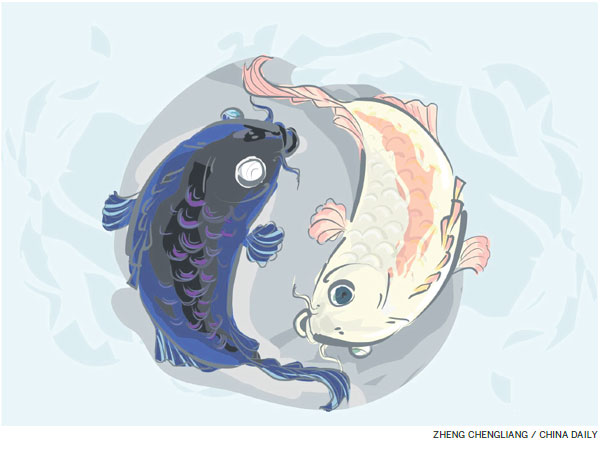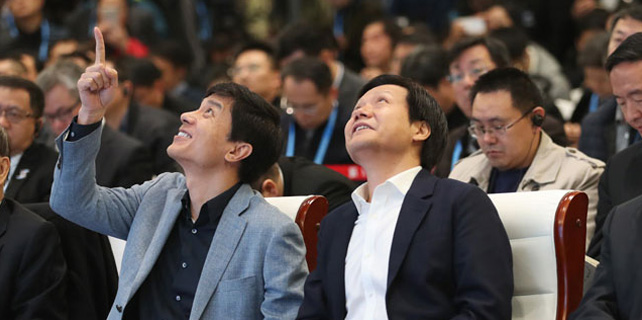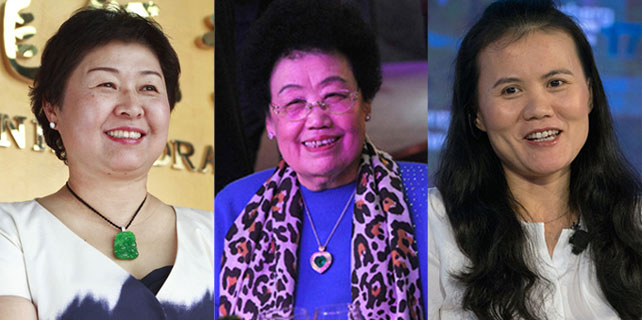Variations on yin and yang
Inspiring and explanatory, this traditional concept gives access to the Chinese mind, its cognitive operations and its perception of the world
For China, being a gigantic market of 1.4 billion people, a potent geopolitical actor having influence across the globe, and an ancient civilization is both a strength and a singularity. None of the other players of the international community combines these three dimensions of power.
The Chinese economic and sociopolitical dynamics are largely covered by the media, but the more arduous study of "civilizational China" as an object of Sinology and cultural history is much less common, even if it better explains the behavior of the "Middle Country".

The Chinese writing system, which took form on oracle bones more than three millennia ago and is still in use today, is a taste as much as a quest for political unity more reminiscent of the ancient Romans than classical Greece. But it is also a set of more abstract principles that can be considered as constant features of Chinese civilization.
With the passage of time, these constituting elements have certainly evolved, but they have withstood the internal revolutions and external shocks of the incomparably long Chinese history.
Among China's philosophical concepts, the yin and yang have always had a special status and significance. They stand as a key to decipher the classic I Ching (Book of Changes) and its combination of broken and solid lines forming the 64 hexagrams. They are the foundations of the rich and vibrant traditional Chinese medicine and contemporary Chinese thinking. Art, fashion, cooking and aesthetics cannot be understood without a reference to these principles inherent to the Chinese mind.
Like the notion of tao (the way), or da tong (the great unity), a mere transliteration of yin and yang into other linguistic contexts is preferable to what can only be defective translations.
Traditionally, one paraphrases the yin as the feminine, the negative or the shadowy side, while the yang is depicted as the masculine, the positive or the luminous versant, but the yin and the yang should be taken as such: two opposite but interconnected forces at the origin of everything, being both distinct and inseparable, an infinite productive tension.

Represented by the circular yin-yang diagram, also known as the taijitu, the "supreme ultimate" that Zhou Dunyi (1017-1073) introduced in his Taiji Tushuo, is nowadays universally recognized.
Inspiring and explanatory, the diagram is a rich and profound symbol that gives access to the Chinese mind, its cognitive operations and its perception of the world.
The visualization of the yin-yang diagram reveals a positive approach of contradiction. The yin is not the exclusive opposite of the yang; they nourish each other, they are both separate and one, the yin is in the yang as much as the yang is in the yin. They are simultaneously within and outside each other.
Nonexclusive opposites are natural and familiar to the Chinese mind. While the Western mind would tend to ask, like Hamlet, "To be, or not to be", China would answer "To be, and not to be".
In the most common use of the Chinese language, linguistic opposite compounds are numerous. The contraries do not annihilate each other - their juxtaposition is a transformation into a third, meaningful idea.
A beginner in the learning of Mandarin rapidly encounters examples of this lexical characteristic: duo shao (many/few - how much), hu xi (exhale/inhale - breath) or chang duan (long/short-length).
This generative contradiction is also at the source of a more sophisticated literary creation. In Cao Xueqin's 18th century masterpiece Dream of the Red Chamber, the often commented "when one takes fiction for reality, reality is fiction, when one takes nothing for being, being turns into nothing" is a reflection on the nature of a novel, but it beautifully plays with the interactions among opposites.
In the field of philosophy, both Sun Tzu (544 BC-496 BC) and Zhuangzi (369 BC-286 BC) make such a use of paradoxes and contradictions that the most intriguing parts of modern quantum physics do not surprise those familiar with the Taoist tradition.
Since yin and yang philosophy fully recognizes the essentially contradictory realities, it is also a representation of a cyclical approach of time. It has to be noticed that the yin-yang diagram is made of circles and that not a single strait line enters in its composition.
When Europe during the Enlightenment of the 18th century began to believe in the notion of progress, it also gradually adopted a linear comprehension of time. Western modernity tends to be the assumption that the future that has yet to come will be better than the present, and it looks at the past as something that has to be overcome.
As an ancient civilization, China is not exclusively concerned with a future necessarily carrying with it progress, for it remembers itself as an alternation between rises and declines. Time passes, but it does not have to be an advancement into another qualitatively discontinuous step. As the two monumental studies of ancient Chinese history - Sima Qian's (135 BC-86 BC) Records of the Historian and Sima Guang's (1019-1086) Comprehensive Mirror in Aid of Governance - show, it is a repetition of the same patterns.
Through her long history, China has experienced moments of glory (the Tang or Song dynasty) but also painful moments of decay: the end of the Ming dynasty with the suicide of the young Emperor Chongzhen (1611-1644), or the long agony of the Qing Empire that Cao Xueqin (1715-1763) anticipated with the foresight of a real genius.
The incipit of Luo Guanzhong's Romance of the Three Kingdoms, another true masterpiece of Chinese literature written in the 14th century, is an obvious reference to the cyclical rhythm of Chinese history: "The world under heaven, after a long period of division, tends to unite; after a long period of union, tends to divide."
The rendition of an essentially contradictory reality, the illustration that, in a cyclical conception of time, the past can also be the future, the yin-yang diagram can also symbolize the organic junction between the East and the West.
In this perspective, the East and West, like yin and yang, should not be interpreted as two definitive standing blocks absolutely external to one another, but as two active poles that complement and nourish each other.
For the ancient Greeks who gave Europe its intellectual foundations, but also for classical China, civilization has been shaped by opposition with the barbarians. Barbarians were a degraded otherness in a divided mankind.
In the "Orientalism" that Edward Said (1935-2003) deconstructed or in the "Occidentalism" that mirrors it, the imagined other is always in a distant belittlement, but an East-West transformative dualism is the cultivation and appreciation of meaningful interactions.
In today's world of unprecedented interdependence, the contrast between East and West allows the contours of their respective identities to appear with clarity. But at a higher level of awareness, differences are not what separate but what make a concrete universalism possible.
Cultural identities, contrary to the globalists' fantasies, do exist and they should be allowed to flourish. However, in their most accomplished forms, they are the realization that they thrive both from the reinterpretation of the traditions that made them what they are but also from the equally valuable existence of the other.
In other words, sameness and otherness can be understood as another variation on the yinyang principle; they do not exist absolutely by themselves, but only through their interrelations.
When 21st-century renascent China proposes to the world the vision of "a community of shared destiny for mankind", it is fully itself in the reinterpretation of the ancient concept of da tong. But at the same time, it rightly assumes that the East and the West, like yin and yang, can infinitely cross-fertilize.
The "Silk Road effect" is not the exchange of goods across an objective physical geography. It is the constant transformation of East and West when they are wise enough to appreciate their vital and inherent interconnection.
The author is founder of the Europe-China Forum (2002) and of the New Silk Road Initiative (2015). He has contributed this article exclusively to China Watch. The views do not necessarily reflect those of China Daily.
(China Daily European Weekly 08/10/2018 page11)


















